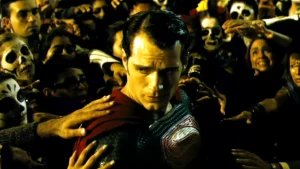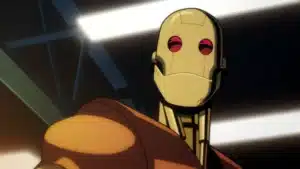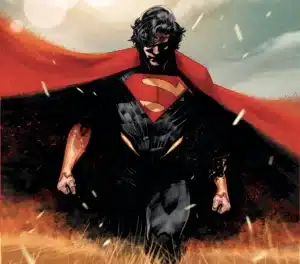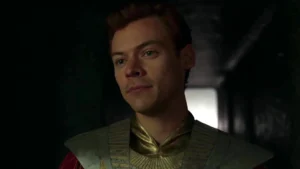The DCEU (DC Extended Universe) was once a cinematic powerhouse, with films that consistently grossed between $800 million and $1 billion at the box office. This shared universe, built around some of the most iconic superheroes in history, seemed poised to compete head-to-head with Marvel, promising both quality and financial success. With a legacy rooted in beloved franchises like Batman Begins and The Dark Knight, DC was synonymous with quality and profitability. The animated universe was superior to Marvel’s, their video games like the Arkham Saga were smashing successes, and in previous decades, they had achieved win after win with films like Christopher Reeve’s Superman and the Wonder Woman series starring Linda Carter.
However, despite this strong foundation and initial success, the DCEU ultimately faltered. The universe that once had everything to compete with Marvel ended badly, hitting rock bottom to the point that Warner Bros. had to reboot the entire franchise. The downfall was marked by a series of controversial films, box office flops, and the abrupt firing of its most important actors. In the end, the DCEU’s potential was overshadowed by its failures, leading to a reboot before even closing the story arcs of its main characters.
The Rise of the DCEU
Early Success and Established Brand
The DCEU’s journey began on a strong foundation, with DC being a well-established brand that had garnered immense respect and success over the years. Batman Begins was universally loved, and The Dark Knight became the highest-grossing superhero movie in history. These films set the stage for DC as a synonym for quality and financial success. Beyond live-action films, DC’s dominance extended into various media. Their animated universe was considered far superior to Marvel’s offerings, except for Earth’s Mightiest Heroes. The Arkham Saga video games were an absolute success, further solidifying DC’s reputation. In previous decades, DC had seen consistent victories with franchises like Christopher Reeve’s Superman, Linda Carter’s Wonder Woman, and even the ’90s Flash series and Smallville, which were well-received by audiences.
The Competitive Threat of Marvel
Despite this strong position, DC’s superiority wasn’t destined to last forever. The landscape of superhero films began to shift with the success of Iron Man in 2008. Warner Bros. quickly realized that the competition could catch up and potentially overtake them within a few years. Marvel Studios was introducing a shared universe in cinemas for the first time, replicating the comic book formula. This approach of interconnected stories and character crossovers was revolutionary at the time. While it’s common now, in the early 2000s, most Hollywood studios thought this idea would fail—until Marvel proved it could be done successfully.
Warner Bros. saw the writing on the wall and recognized that they needed to catch up and surpass Marvel to maintain their dominance. They knew they had an ace up their sleeve: the movie rights to all their characters. Unlike Marvel, which couldn’t use some of its biggest heroes like Spider-Man, the X-Men, and the Fantastic Four due to rights issues, Warner Bros. had unrestricted access to the Justice League, the Teen Titans, the Legion of Superheroes, and the Doom Patrol. This gave them the potential to replicate Marvel’s success even faster.
Man of Steel: The Beginning of the Shared Universe
With this competitive pressure in mind, Warner Bros. made the decision to start their shared universe with Superman, the most important superhero in history. They chose Zack Snyder as the director because he was one of Warner’s most trusted men at the time. Snyder had directed Watchmen and 300, two comic book adaptations that had pleased fans and received applause from critics. Snyder knew how to adapt comic book concepts and add his own distinctive touch to them, making him seem like the perfect choice to helm DC’s transition into a shared universe.

Man of Steel marked the beginning of this ambitious project. Production began in 2010, and the film hit theaters in 2013, just a year after The Dark Knight Rises. The movie grossed $668 million, more than any DC film had ever made, except for The Dark Knight. Although not everyone loved it—some fans felt that this wasn’t “their” Superman or were upset that the Man of Steel was depicted killing—overall, the reception was good. The soundtrack was praised, the special effects were spectacular, and the film delivered as an origin story. Man of Steel held up well over the years and was successful enough that Warner Bros. decided to continue with that universe. Henry Cavill’s Superman was set as the central figure, and Zack Snyder was entrusted with overseeing the development of the DCEU’s broader story, leading to the greenlighting of future projects.
The Fall Begins: Controversies and Missteps
Batman v Superman: Dawn of Controversy
The fall of the DCEU began with what was supposed to be one of its crowning achievements: Batman v Superman: Dawn of Justice. The film’s announcement at Comic-Con in 2013 was met with overwhelming excitement and hype. This was to be the first movie crossover of the two biggest superheroes in the world, and it was set to include nods to The Dark Knight Returns, one of the best Batman comics ever. The anticipation was sky-high, and many expected this film to be a monumental success.

However, Batman v Superman quickly became the most controversial superhero movie in history. The reception was deeply divided. Some people loved it immediately, claiming it was the best thing DC had ever made and one of the best superhero movies ever. Snyder was hailed by these fans as the second coming of Christ. But another part of the audience hated the movie for various reasons: the infamous Martha scene, the characterization of Batman and Superman, the stilted conflict, the film’s depressing tone, how useless Lois Lane appeared, Superman’s premature death, and the portrayal of Lex Luthor, who looked more like the Joker than the iconic villain.
This was only the second DCEU project, but it wasn’t equivalent to Thor 1, the second MCU project. DC put their two most important characters together, threw in Wonder Woman, and also introduced the entire Justice League. This was their equivalent of Avengers 1, but unlike Avengers, the audience did not leave the theaters loving it. It didn’t even get the lukewarm reception of Age of Ultron. Instead, a portion of the audience left the cinema cursing after seeing Batman v Superman. Although it performed reasonably well at the box office, grossing $870 million, it fell short of the $1 billion mark that Avengers films typically grossed. To add insult to injury, Marvel released Captain America: Civil War two months later, featuring their own clash between iconic heroes, and it grossed $1.5 billion while being far better received by audiences.
Warner Bros.’ Panic and the Suicide Squad Fiasco
The mixed reception of Batman v Superman sent Warner Bros. into a state of panic. Unsure of what went wrong—whether it was the tone, the director, the script, or simply the expectations—they were desperate to make amends before the release of their next big project, Suicide Squad. The problem was that Suicide Squad was already set to be released in August of that same year and shared the same tone as Batman v Superman. Ben Affleck’s Batman even appeared in the film. Warner Bros., fearing a repeat of the Batman v Superman backlash, made a drastic decision. Instead of sticking to the original plan, they hired a team of trailer editors to remake the entire film, distancing it from the dark tone of Batman v Superman.
To everyone’s surprise, Suicide Squad was not a box office flop. It grossed $746 million, more than Man of Steel, despite having a smaller budget. However, the reactions were overwhelmingly negative. Suicide Squad quickly ascended to the top of every list ranking the worst superhero movies ever. Whether you hated Batman v Superman or loved it, Suicide Squad was almost universally despised. The film was criticized for its disjointed editing, inconsistent tone, and weak character development.
Warner Bros. had panicked once again, but this time, the panic was well-founded. Although the box office numbers were still decent, it was only a matter of time before audiences would start abandoning the DCEU entirely. How many more times were moviegoers expected to leave the theater disappointed? Suicide Squad marked another critical misstep for the DCEU, further eroding the audience’s trust and setting the stage for the franchise’s eventual collapse.
Brief Resurgence and Continued Struggles
Wonder Woman: A Glimmer of Hope
Amidst the controversies and missteps that plagued the early DCEU, Wonder Woman emerged as a rare success story, offering a glimmer of hope for the franchise. Released in June 2017, Wonder Woman stood out as a bright spot in an otherwise troubled cinematic universe. The film, which featured one of the best parts of Batman v Superman, was a well-told origin story with good special effects. It followed the fish-out-of-water formula similar to Thor 1 but executed it better.

Wonder Woman was met with overwhelmingly positive reception, grossing $822 million at the box office. This time, the audience loved the movie, as did the critics. Even fans who were divided over Zack Snyder’s previous films found common ground in their appreciation for Wonder Woman. Snyder fans loved it, Snyder haters loved it, and, most importantly, the general audience connected with Diana Prince, eagerly anticipating her return. This success momentarily brought the DCEU back to life, rekindling the optimism that had existed after Man of Steel. For a brief moment, it seemed like the DCEU was back on track and ready to capitalize on this newfound momentum.
Justice League: A Turning Point
However, the hope sparked by Wonder Woman was short-lived. The DCEU faced another major turning point with the production and release of Justice League. Despite the controversy surrounding Batman v Superman, Warner Bros. had decided to keep Zack Snyder as the director of Justice League. Snyder had ambitious plans for the film, intending to make two Justice League movies in which Superman would be revived, Darkseid would attack Earth, and the heroes would ultimately defeat the villain.

Unfortunately, tragedy struck during the production of Justice League when Zack Snyder had to abandon the project due to the death of his daughter. This unexpected event led to significant changes in the film’s direction. Warner Bros. brought in Joss Whedon, the director of Avengers 1 and 2, to complete the film. Whedon was tasked with finishing post-production, but instead of merely following through with Snyder’s vision, he conducted two months of reshoots, altering the tone of the film to make it more family-friendly and removing any promise of a Justice League Part 2.
The result was a Frankenstein monster of a movie that no one liked. The shift in tone didn’t work, the reshoots felt out of place, and several subplots remained unresolved. The special effects were half-finished, and the entire film felt disjointed. The only redeemable aspect, according to some, was seeing Superman being a hero, something Henry Cavill himself had expressed enthusiasm for. But this was overshadowed by the infamous CGI-covered mustache, which became a symbol of the film’s haphazard production.
Justice League grossed $657 million, making it the worst box office result of the entire DCEU up to that point. Compounding the issue, it was also the most expensive project in the franchise. The critical and commercial failure of Justice League was catastrophic, comparable to the debacle of Suicide Squad, but with far more severe repercussions. This was supposed to be the DCEU’s equivalent of Avengers 1, the film that would unite all the major heroes and set the stage for future success. Instead, it left the franchise in shambles, triggering internal turmoil at Warner Bros., with power struggles, accusations, and resignations following in its wake. The DCEU, once full of promise, was now teetering on the edge of collapse.
Attempts at Revival
Aquaman’s Surprising Success
Amid the struggles and controversies surrounding the DCEU, Aquaman emerged as an unexpected success story, providing a glimmer of hope for the franchise. Released in 2018, Aquaman had everything going against it. It was a sequel to Justice League, a film that had left a bad taste in the mouths of many fans. Given the declining interest in the DCEU, many expected Aquaman to be a flop. However, Warner Bros. had already finished the movie, so they had to release it.

Surprisingly, Aquaman did more than just well—it performed remarkably at the box office. The film grossed $1.1 billion, becoming the highest-grossing film in the DCEU by far, and also the highest-grossing film in DC’s history, surpassing even Nolan’s Batman trilogy. Despite not generating much hype and receiving so-so reviews from critics, casual audiences loved it. Aquaman was a typical superhero origin story, but it worked, much like Man of Steel and Wonder Woman had. The underwater sequences were particularly praised for their innovation, offering something audiences had never seen before.
However, while Aquaman’s success was impressive, it wasn’t enough to magically restore the DCEU’s reputation. People were still wary of the DC brand after so many flops and disappointments, and the fandom that had once rallied behind the shared universe had largely disappeared. Nonetheless, Aquaman’s billion-dollar success showed that not everything was lost, and that there was still potential within the DCEU, if handled correctly.
Standalone Films and the Impact of the Pandemic
Following the surprising success of Aquaman, Warner Bros. shifted focus to standalone films with lighter tones and smaller budgets, hoping to regain the trust of audiences. Shazam! was one of these efforts, released in 2019 as a fun, family-friendly comedy that brought a new flavor to the DCEU. Audiences generally liked Shazam!, and while it didn’t reach the box office heights of Aquaman, it still performed respectably. The film grossed $367 million, making it profitable given its modest $100 million budget. Though it wasn’t a blockbuster hit, it contributed positively to the DCEU’s portfolio.
Birds of Prey, released in early 2020, was another attempt to steer the DCEU in a new direction. With an even smaller budget of $84 million, the film targeted the female audience and fans of Harley Quinn, who had been a standout character in Suicide Squad. However, Birds of Prey struggled at the box office, grossing only $205 million. The film’s performance was affected by the lingering bad taste from Suicide Squad and by the fact that it was a sequel to one of the worst-received films in the DCEU. Additionally, just a month after its premiere, the pandemic hit, leading to cinema closures worldwide, which further dampened its potential earnings.
The pandemic also had a significant impact on Wonder Woman 1984, the sequel to one of the DCEU’s most successful films. Initially slated for a June 2020 release, the film was delayed several times due to the global crisis. Warner Bros. eventually decided on a simultaneous release in theaters and on HBO Max in December 2020, a decision that drastically affected its box office performance. Wonder Woman 1984 grossed only $169 million, a far cry from the first film’s $822 million. The pandemic and the mixed critical reception played major roles in the film’s underperformance. While it didn’t ruin the character’s image, it certainly didn’t help reignite the enthusiasm for the DCEU. This marked another missed opportunity for the franchise as it struggled to maintain momentum during an incredibly challenging time.
The Snyder Cut and Final DCEU Projects
The Release of the Snyder Cut
Following the critical and commercial failure of Justice League in 2017, a dedicated group of Snyder fans began a persistent online campaign under the hashtag #ReleaseTheSnyderCut. They believed that Zack Snyder’s original vision for the film had been compromised by Joss Whedon’s reshoots and edits, and they demanded to see the director’s cut of the movie. This movement gained momentum over the years, and eventually, Warner Bros. decided to listen to the fans. In early 2020, with Hollywood productions halted due to the pandemic and streaming becoming increasingly important, Warner Bros. saw an opportunity. They invested an additional $70 million to complete post-production on Snyder’s version of Justice League, which was then released on HBO Max in March 2021.

The Snyder Cut was met with a much more positive reception than the theatrical release. It became the fourth most-watched film on streaming in 2021, and even some of Snyder’s detractors admitted that his version was a significant improvement. However, despite its success in gaining subscribers for HBO Max and pleasing Snyder’s fan base, the release of the Snyder Cut had limited impact on the future of the DCEU. The studio had already moved on from Snyder’s vision, and the Snyder Cut was treated more as a standalone event than a revival of his original plans for the franchise. While it provided closure for some fans, it didn’t alter the course of the DCEU, which was already heading in a different direction.
James Gunn’s Involvement and the End of the DCEU
As the DCEU continued to struggle with inconsistent success, Warner Bros. made a bold move by bringing in James Gunn, the director known for his work on Marvel’s Guardians of the Galaxy series. Gunn had been briefly ousted from Marvel due to some controversial old tweets, and Warner Bros. seized the opportunity to hire him, offering him the freedom to choose any project he wanted. Gunn decided to helm a soft reboot of Suicide Squad, a surprising choice given the disastrous reception of the 2016 film.

Gunn’s The Suicide Squad was released in August 2021, both in theaters and on HBO Max. The film was well-received by critics and fans alike, praised for its humor, action, and strong characterization. It quickly became one of the best-rated films in the DCEU. However, despite the positive reviews, The Suicide Squad struggled at the box office, grossing only $168 million. This disappointing performance was attributed to several factors, including the ongoing pandemic, the simultaneous streaming release, and residual negativity from the 2016 Suicide Squad film.
Despite these struggles, Warner Bros. remained confident in Gunn’s abilities, leading to his appointment as the co-head of DC Studios, alongside Peter Safran, in late 2022. Gunn was given complete creative control to chart a new course for the DCEU, which led to a series of soft reboots and new projects. However, the final DCEU films that had already been produced continued to face challenges.
The Flash, one of the most anticipated DCEU projects, became the biggest flop in the history of superhero movies, plagued by poor visual effects and a storyline that failed to reboot the universe as intended. Black Adam, despite featuring Dwayne Johnson and a cameo by Henry Cavill as Superman, also underperformed at the box office, grossing $390 million, which was not enough to be profitable given its high production costs. Aquaman 2, the sequel to the DCEU’s highest-grossing film, managed to gross only $430 million, a steep drop from its predecessor’s $1.1 billion.
These continued struggles at the box office, despite occasional critical successes, signaled the end of the DCEU as it was originally envisioned. The final projects, including The Flash, Black Adam, and Aquaman 2, failed to capture the audience’s interest, marking a clear endpoint for the DCEU. With James Gunn at the helm, Warner Bros. prepared to move forward with a fresh slate of projects, effectively closing the book on the DCEU and its troubled legacy.
Conclusion
The legacy of the DCEU is one of repeated cycles of potential and failure. From its early days, the DCEU seemed poised to rival Marvel with its lineup of iconic characters and ambitious shared universe. However, despite moments of success, such as the strong foundation set by Man of Steel and the critical acclaim of Wonder Woman, the franchise was repeatedly undermined by missteps, controversies, and inconsistent creative direction.
The DCEU’s history is marked by a series of highs and lows, with each new project either sparking hope or deepening the disappointment among fans. The franchise never quite found its footing, struggling to balance the darker tones of Zack Snyder’s vision with the lighter, more comedic elements that were later introduced. The result was a cinematic universe that, despite its immense potential, ultimately failed to live up to expectations.
The eventual reboot of the DCEU under James Gunn marked the end of the original shared universe, bringing closure to a tumultuous chapter in DC’s cinematic history. Gunn’s appointment signaled a new direction for the franchise, one that seeks to learn from the mistakes of the past while building on the strengths that were occasionally glimpsed in the DCEU’s run.






